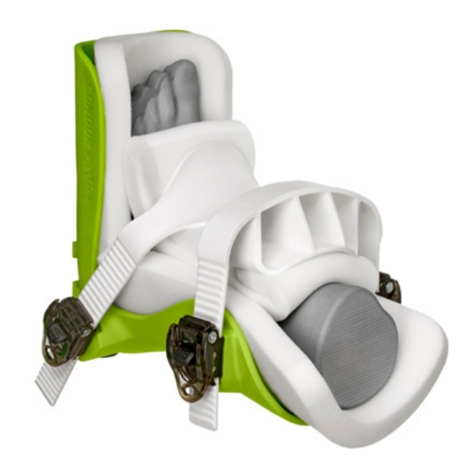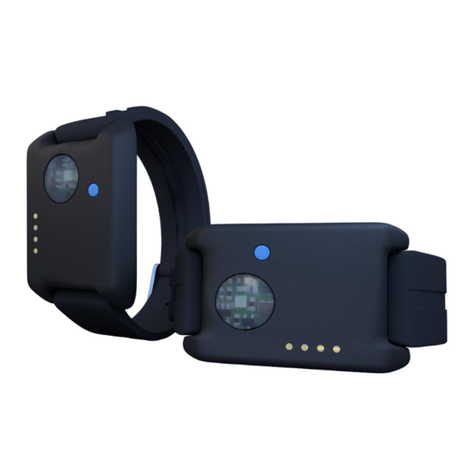
Instructions for Care and Use Condor® Extension System (ES) – Edition 2022-08-23 EN
4
Summary of the safety instructions
Attention !
During height adjustment or lateral movements,
the RotexTable® and the leg plate may collide and
damage the device. In this case, swivel the leg plate
of the healthy leg outward in order to ensure suffi-
cient freedom of movement for the RotexTable®.
Attention!
If the stability of the ES and operating table combi-
nation is low, please always use the leg plate support
for the ES to prevent the operating table including
the ES from tipping over!
Pay attention to instructions on the use of the
support in the delivery documents.“
Danger !
If RF current flows unintentionally in activated RF
surgery devices, there is a risk of burns for pati-
ents. Patients must therefore have no contact with
electrically conductive pads and metal parts of the
extension system. Always place an insulated,
water-proof foil between pads and patient.
Danger !
The ES can come loose if the cross strut is not
properly attached to the operating table. Always
verify that the ES is firmly attached to the operating
table.
Danger !
The leg plate or the RotexTable® may become deta-
ched from the ES if the connecting pins are not
completely latched in. Always verify that the leg
plate or the RotexTable® is firmly attached to the ES.
Attention!
In some cases, the leg plates may need to be folded
away.
Attention!
When adjusting the height of the operating table
again, the height of the support must also be read-
justed. For this purpose, the star grip should be
opened before moving the operating table and then
fixed again at the appropriate height.
Attention!
The support must be adjusted again and positioned
vertically if the operating table is moved longitudi-
nally. Check the stability of the system again!
Danger!
If the operating table is moved down without first
releasing the height adjustment of the support,
damage may occur to the support, the ES and/or
the operating table.
Danger!
If the operating table is moved upwards without
adjusting the height of the support, the operating
table may tip over. Therefore, adjust the height of
the support each time you adjust the height of the
table.
Caution !
Even though the hand wheel of the traction device
runs very smoothly, injuries to the patient through
excessive extension are still possible. Proceed very
carefully during extension.
Caution !
Extension shoes that have not been properly
secured can get loose, and the patient could be
injured. Verify the firm attachment of the extension
shoe on the traction device.
Attention!
When using the ES, make sure that nothing is under
the system. Otherwise, when lowering the opera-
ting table, damage to the ES and/or operating table
may occur.
Caution !
Please make sure that both leg plates are selected
on the operating table control and that they are
only moved on both sides. There is a risk of the ES
conncting plate breaking if it is moved on one side
only!
Danger !
After the operation, make sure that the patient is
centrally positioned on the operating table before
transporting him out of the operating room! There
is a risk of tipping!





























